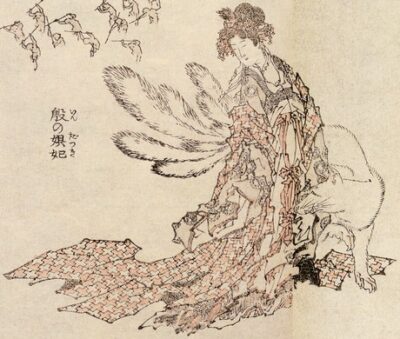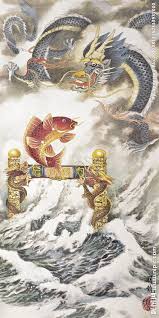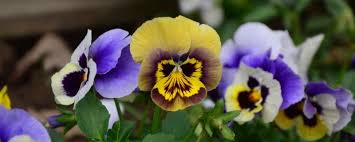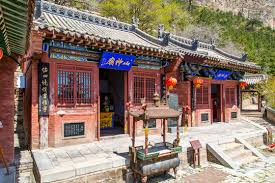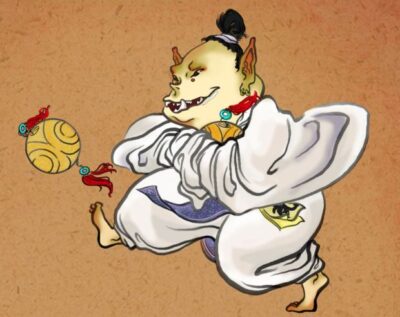Episode 89: Nine Sons Of The Dragon
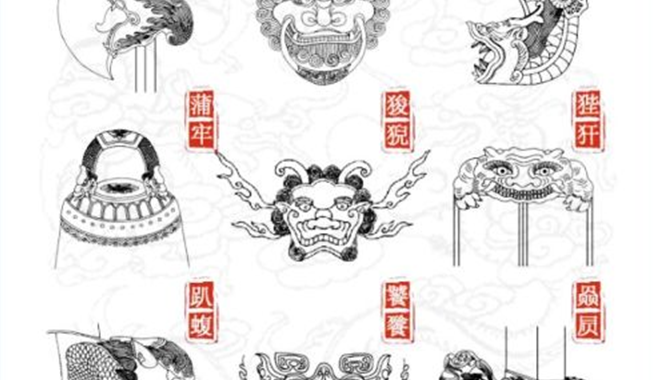
I know we haven’t really talked about dragon yet. Since there are so much about the dragon in Chinese mythology, today I decide to talk about the nine sons of the dragon. Why are there nine sons? In Chinese, besides the number, nine also means many like in English a couple of means a few. Nine also was considered the number of the emperor.
There is a Chinese saying called nine sons of the dragon are all different. The myth about that the dragon has nine sons started from the Ming dynasty 明朝 in the book HuaiLuTangJi 怀麓堂集 and ShengAnWaiJi 升庵外集.
There are different variations of the nine sons. According to the book HuaiLuTangJi by the author Li DongYang 李东 阳, it says,
The first son is called QiuNiu 囚牛, a mythical creature that likes music and can be found as a decoration to adorn musical instruments like a string instrument HuQin 胡琴. Niu means cows but I am sure if QiuNiu is a hybrid of a cow and a dragon.
The second son is called 睚眦 YaZi (二 四声), a mythical creature that is aggressive. He likes to fight and can be found as decorations on the cross-guard of swords. It looks like YaZi is having the blade in its mouth. YaZi’s eyes are always widely open and looks like a hybrid of a wolf and a dragon.
The third son is called 嘲风 ChaoFeng, a mythical creature that likes adventures and can be found on the corners of roofs. ChaoFeng represents good luck and power and of course ward off evil spirits.

The fourth son is called 蒲牢 PuLao, a mythical creature that likes to scream and can be found as decorations on the top of bells. So the bells can be heard far away. It says PuLao is scared of whales so the bell hammer sometimes is carved as a whale.
The fifth son is called 狻猊 SuanNi (一 二声), a mythical creature that is quite and likes to sit down and can be found on the bases or at the feet of a Buddhist idols or a Buddhist incense burner. SuanNi looks like a hybrid of a lion and a dragon. Like we talked about in the episode 13 guardian lions that there are no lions in China. The lion symbolism is from Indian culture through Buddhism. The name SuanNi is said a translation of lion from some language from the central Asia. Maybe that’s also a reason that SuanNi can be found around Buddhism statues.
The sixth son is called 赑屃 BiXi (四四声) or BaXia 霸下,a mythical creature with a hard shell looking like a hybrid of a turtle and a dragon. People sometimes misinterpret them as turtles however BiXi has teeth. It is able to carry heavy objects like tombstones.

The seventh son is called 狴犴 BiAn (四四声), a mythical creature that looks like a hybrid of a tiger and a dragon. BiAn likes litigation and stands for justice. It can be found in the court room and prisons.
The eighth son is called 负屃 FuXi (四四声), a mythical creature that likes literature and can be found on the top of tombstones. FuXi looks like dragon itself.

The ninth son is called ChiWen 鸱吻 (一三声), a mythical creature that has a wide throat and likes to swallow. ChiWen looks like a hybrid of a fish and a dragon. It can be found on both ends of the ridgepoles of roofs and looks like they are swallowing the ridgepoles. Since ChiWen is half fish, it can put off fire. So the wooden structured buildings are protected not being caught on fire.
According to the book ShengAnJi, there are some variations. There is son called TaoTie 饕餮, a mythical creature that likes to eat and its head pattern can be found on cooking wares.

There is a son called BaXia 虫八 虫夏 (一四声), a mythical creature that like water and can be found on bridges and outlets of sewage.
There is a son called JiaoTu 椒图, a mythical creature that looks like a clam and doesn’t like to be disturbed and can be found on the front door as decorations of door knobs.
Mentioned:
怀麓堂集 HuaiLuTangJi
升庵外集 ShengAnWaiJi

